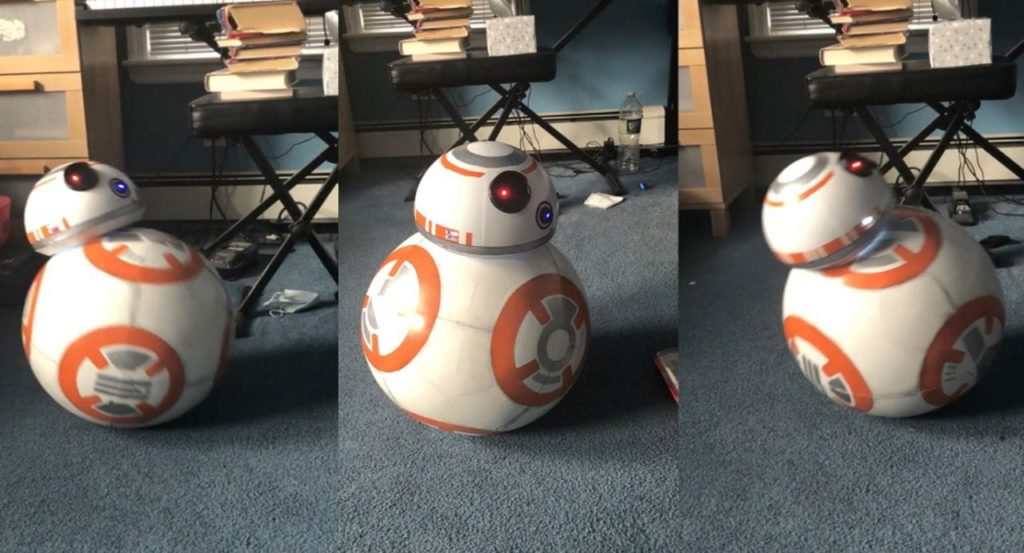
This week’s selection is the BB8 by reddit contributor Nachos-printer.
Almost everyone has seen the Star Wars series. Among its wonderful group of characters, one of the most beloved is the cute BB8 robot, which has a role in the saga.
When I first saw BB8 on screen, I wondered (as I always do) how it could possibly work. It’s composed of two spheres, the larger on the bottom. The bottom sphere rolls forward for motion, and the top sphere somehow remains stable on top during that motion.
I concluded the BB8 concept was one of those future science fiction things we wouldn’t see for many years, if ever. Something like warp speed, transporters or Death Stars.
I was wrong. Nachos-printer has built a functional BB8 that moves in exactly the same manner as the original screen version. Don’t believe me? Watch this:
How could this possibly be 3D printed? What is the motion engine for this robot?
While the spheres are easily 3D printed in parts and assembled, the motion system is the key to this BB8. Nachos-printer explained online that the “head” is held fast by four strong N52 magnets in both the head and main sphere. There is a servo motor in the bottom that rolls the BB8 forward. Or any other direction.
How did Nachos-printer come up with this concept? He explains:
“For my way, image a hamster inside a ball. But the hamster has a stick attached to its back with magnets. As the hamster walks up the wall the ball moves forward due to the offset of the weight force along the x and y axis, causing the ball to move forward. And now, instead of a hamster imagine a platform with 2 wheels.”
The BB8 includes 3kg of counterweights to keep the system oriented properly. The head’s friction on the base is reduced by using roller transfer bearings.
The location of the power control switch is interesting, because the nature of the device doesn’t allow for an obvious placement: the base can roll in any direction. It turns out that Nachos-printer included a secret hatch that can be opened to turn BB8 on or off.
Control of the BB8 is done remotely via bluetooth. There are two HC-05 bluetooth modules, one in each sphere: the head is powered separately because there’s no physical electrical connection between the spheres.
Nachos-printer designed the entire project over a period of about six months. 3D printing the parts on his tiny Flashforge Adventurer took about a month, followed by extensive assembly and painting.
I’m assuming many readers would like to take on this project, but you’ll have to be patient: Nachos-printer is at this moment writing up a very detailed project plan to be posted on Instructables. The 3D files will also be posted to Thingiverse.
Keep watch for them!
Via Reddit
